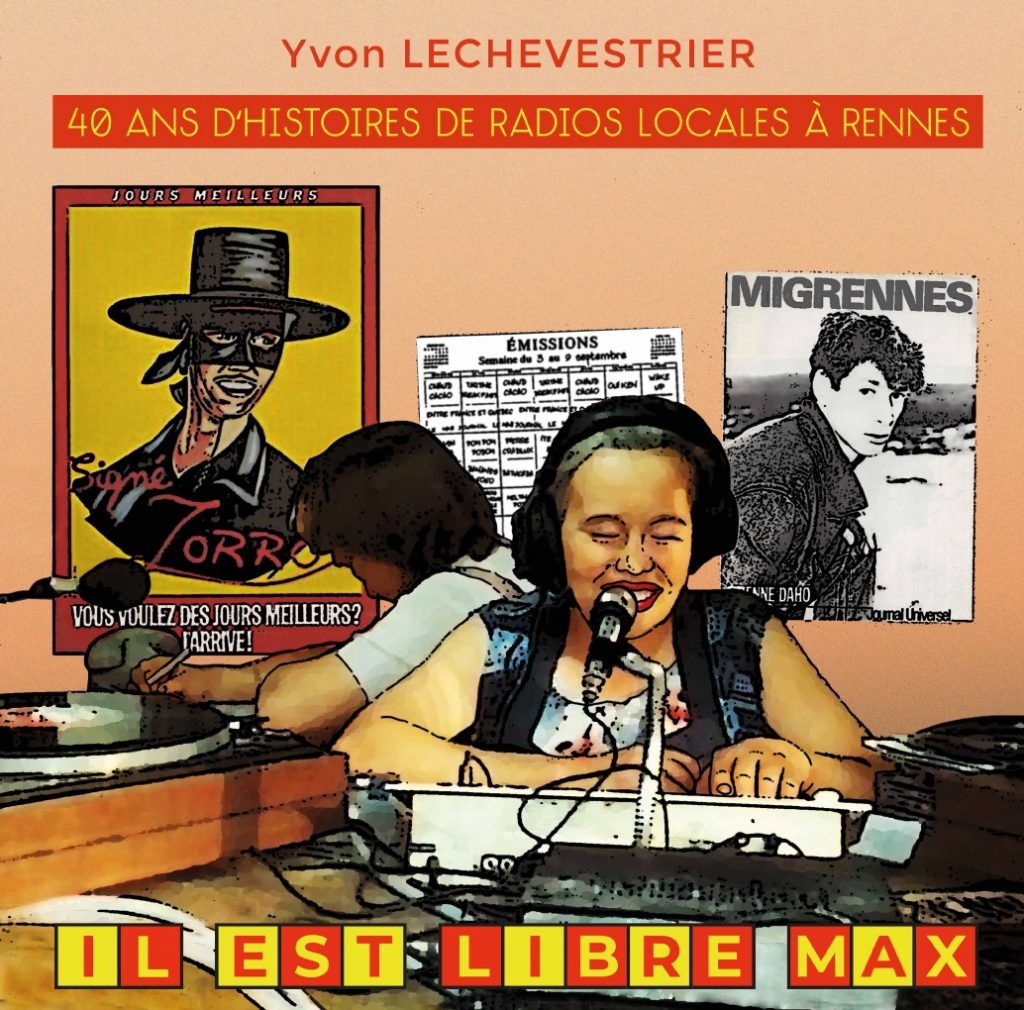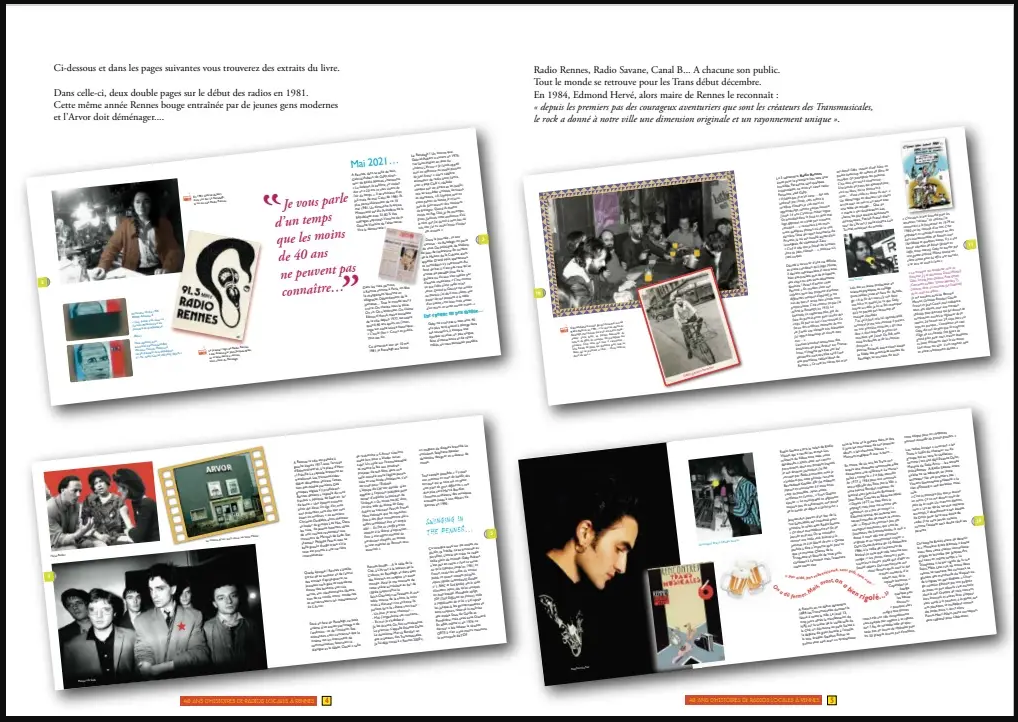
Source: photo courtesy of the author, Yvon Lechevestrier
Forty years ago, the French state broke the monopoly in the FM band, authorising the emergence of private associative broadcasters. At that time, the FM band was populated by a few channels: the public ones of Radio France and a few private ones, such as Europe 1 and RTL. From 9 November 1981, the phenomenon exploded, immediately making radio a popular medium: within a year, there were two thousand free radio stations. The next step came in 1984 when advertising was authorised, and radio stations could choose between two organisational formulas: remaining an associative broadcaster, relying on state subsidies, or standing on their own two feet, becoming a commercial station living off the revenue from commercials.
The epic told in a book

Source: photo courtesy of the author, Yvon Lechevestrier
In Rennes, there were two pioneers: Gaby Aubert, a butcher’s boy turned bistro owner, who launched Radio Rennes, which is still in operation today, and Pierre Giboire, a 23-year-old student who created Fréquence Ille on 14 July 1981: it was an immediate success, quickly becoming one of the radio stations that symbolised the liberalisation of the airwaves. Not much time passed and in the Breton capital, other stations followed the path opened by the pioneers: Rennes FM, Radio Congas, and Radio Vilaine. They are mainly music stations, each distinguished by its own style. It is of this creative period that ‘Il est libre Max‘ (in homage to the name of the first song broadcast by Fréquence Ille), a book written by Yvon Lechevestrier, a former journalist for the French daily Ouest-France, is about. With testimonies and period illustrations, it brings the fabulous 1980s back to life.
Standardisation arrives in the 1990s

Source: photo courtesy of the author, Yvon Lechevestrier
The golden age of local radio continued until the end of the decade, interspersed with episodes from the city’s history. But after the initial enthusiasm, business began to take hold: the most important commercial radio stations, such as NRJ, grew and became national networks. In the 1990s, with the first economic difficulties, most of the pioneers threw in the towel and many stations were absorbed by the networks. The FM band is still very musical, but also, often, very commercial.
Forty years later, the radio scene is still vibrant: at the end of 2020, according to the Conseil Supérieur de l’Audiovisuel (CSA), there were 1,021 private operators and more than 6,000 frequencies. The book, published by AR Editions Collection, costs EUR 29 and can be ordered from arcollectioneditions@gmail.com or directly from the author at ylechevest@gmail.com.
